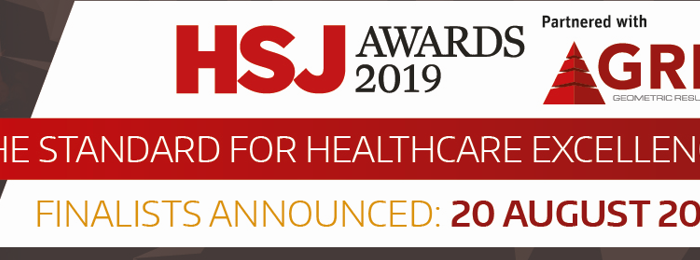On world Sepsis Day, Kenny Ajayi ICHP’s Programme Director – Patient Safety, shares his reflections on the last 12 months and what they have meant for Suspicion of Sepsis (SOS) Insights Dashboard…
Today is World Sepsis Day. It is also the first anniversary of our award-winning Suspicion of Sepsis (SOS) Insights Dashboard. For us here at Imperial College Health Partners (ICHP), the last 12 months have had a significant impact in the world of Sepsis and today has given me the opportunity to share my reflections…
Ongoing Journey
I’m immensely proud of the journey we have been on to develop this tool that enables NHS staff to improve patient care and reduces potential harm by – for the first time ever – providing consistent, accurate and reliable data on sepsis outcomes.
We are now at a point where we can evidence the tool in saving healthcare professional’s time by making data freely and easily accessible in usable format and providing relevant data which can be intelligently applied with precision to improve the quality of patient care.
The tool is starting to empower local teams to determine which methods work best over time, and which may need to be spread more widely across a region or nationally. It is beginning to help to better plan and prepare local services on the road to potentially saving lives across the country.
Partnerships and patience
Two main words have stood out to me over this 12 month journey; ‘partnerships’ and ‘patience’…
Sepsis is one of the most dangerous medical conditions in the NHS – and it’s only by working collaboratively and with patience that we are able to better understand our data that we can start to tackle it.
The SOS Insights dashboard has only been made possible through partnership working across all levels of the system and the hard work of so many colleagues. The team here at ICHP including Julia Wilkins (Head of Analytics) and Katie Harrison (Communications and Engagement Lead) have been driving this programme through the Patient Safety Collaborative (PSC), in collaboration with NHS Improvement’s Patient Safety Measurement Unit and NHS England, building on the methodology for measuring sepsis previously published by Oxford AHSN.
We have had the absolute privileged to work with some of the foremost names in sepsis care including Dr Matt Inada Kim (National Clinical Advisor on Sepsis and Deterioration), Kate Cheema (Former Head of the Patient Safety Measurement Unit at NHS Improvement), Prof Mervyn Singer (Professor of Intensive Care Medicine at University College London) , and John Welch (President, International Society for Rapid Response Systems).
This has all been underpinned through patient public being involved in the development of the dashboard.
Ongoing development
Our colleagues from the wider National Patient Safety Improvement Programme (NPSIP) particularly from West of England Patient Safety Collaborative and the Wessex PSC have been fundamental in testing how to use the data from the dashboard to either demonstrate the impact of systemwide interventions or to understand regional nuances in the pattern of sepsis data. The West of England PSC were able to use the dashboard to demonstrate that the regional use of a national early warning score actually led to better survival rates for SOS across the region.
At national level, the dashboard has received endorsement including those from Matt Hancock, (Secretary of State for Health), Caroline Dinenage (Minister of State for Health) and Celia Ingham Clark (the NHS England/Improvement Medical Director for Clinical Effectiveness).
Being used by at least 60 NHS Trusts
Professional associations including the Royal College of Physicians, Intensive Care Society, the Shelford Group, the UK Sepsis Practitioners’ Forum, and the Society for Acute Physicians have also endorsed or engage with the tool. These partnerships have helped us to raise awareness of the tool which is now being used by at least 60 NHS Trust across several Patient Safety Collaborative regions in England.
Collectively, these collaborations have led to the inclusion of the dashboard in NHS England and Improvements Long Term Plan to Reduce Sepsis and the Royal College of Physicians’ Resources to support the adoption of the National Early Warning Score.
Wider accolade has come in the form of the Dashboard winning the Health Safety Journal (HSJ) Patient Safety Award and being shortlisted as finalist for three other HSJ awards.
Patience
Change takes time and patience. The team and our partners have been shown great preservation to drive our partnership work forward when progress can sometimes be frustrating. Although, a good number of NHS Trusts are starting to use the dashboard to understand the true picture of sepsis and bacteria infection outcomes, there is still much ground to be made.
Next Steps
So, what does the next chapter have in store in the fight against sepsis? We are already building our engagement through assembling an expert advisory panel for our work. We are excited to be partnering internationally with colleagues in New Zealand who have are interested in learning from our design experience of the dashboard and exchanging their learnings with us.
Later this winter we will be launching Generation 2 of the dashboard building upon the ongoing feedback and we will be holding a number of teaching webinars, workshops and other events to help the adoption and spread.
Looking wider, we will be launching a bid process for NHS organisations to receive some funding to support quality improvement initiatives aimed at improving sepsis outcomes driven by the Suspicion of Sepsis Dashboard data.
Our learnings from this work are already being applied in other areas through our partnership with The Royal Brompton & Harefield NHS Trusts seen in the development of the Surgical Site Infection dashboard building upon our methodology and data analytics expertise.
My hope is that on World Sepsis Day 2020, I will be able to report that the aspirations I’ve outlined here have been built on and realised and that we are using faster, accurate, more bespoke data to improve outcomes for sepsis patients.



